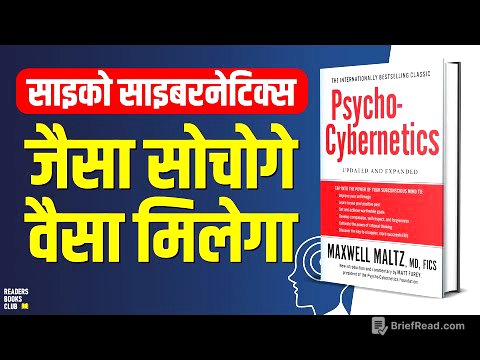TLDR;
This video is the first lesson in a series on the Mesnevi-i Nuriye by Bediuzzaman Said Nursi. The speaker, Emine Eroğlu, explains why she chose this particular work, its significance as a summary of the Risale-i Nur, and its potential to provide guidance and insight. She also discusses the unique qualities of the translation by Abdulmecid Efendi, the importance of understanding the context in which the Mesnevi-i Nuriye was written, and the key sources that influenced Bediuzzaman's thought.
- The Mesnevi-i Nuriye is a seedling of the Risale-i Nur, summarizing its key themes.
- Abdulmecid Efendi's translation captures the spirit of the original Arabic text.
- Bediuzzaman's sources include Imam Rabbani, Imam Ghazali, and Hz. Mevlana.
Introduction and Choice of Mesnevi-i Nuriye [0:00]
Emine Eroğlu expresses her pleasure at gathering with everyone and explains her choice of the Mesnevi-i Nuriye for their readings. She describes it as a "seedling of Nur," akin to the time of Hazrat Mahdi, and notes that it summarizes all the topics of the larger Risale-i Nur. Eroğlu emphasizes that the Mesnevi-i Nuriye, though concise, contains the essence of the entire treatise of light. She encourages participants to make references to the Risale-i Nur during their readings and to share their contributions via email at Emine Eroğ[email protected]. She also mentions the "Four Seasons, Four Books" reading campaign and clarifies that reading the Mesnevi-i Nuriye aligns with this campaign, as it serves as an energic summary of the whole treatise.
The Unique Qualities of the Mesnevi-i Nuriye [6:41]
Eroğlu highlights that the Mesnevi-i Nuriye is a translation from Arabic to Turkish, made by Abdulmecid Efendi. She praises the translation's quality, noting that it closely reflects the original Arabic text. She attributes this to the concept of "Tefani," a state of being painted in the same color, which connects Abdulmecid Efendi to the master. While acknowledging that it is not a full-text translation, she emphasizes that it captures the spirit of the original work. She contrasts this with later full-text translations, which she feels lack the same essence and inspiration.
Abdulmecid Efendi: Translator and Brother [12:50]
Eroğlu provides background information on Abdulmecid Efendi, describing him as a brother and student of Bediuzzaman for 15 years. She recounts his deep respect for Bediuzzaman, considering it a greater honor than their brotherhood. Despite his proficiency in Arabic, Abdulmecid Efendi remained humble and dedicated to serving his brother. He faced various challenges, including war and financial difficulties, but remained steadfast in his faith and service. Eroğlu shares anecdotes about his character, emphasizing his humility, compassion, and dedication to teaching. She also mentions his death in Konya and the preservation of Bediuzzaman's belongings by his family.
Abdulmecid Efendi's Introduction and Modesty [21:11]
Eroğlu discusses Abdulmecid Efendi's introduction to the Mesnevi-i Nuriye, highlighting his modesty and sense of grievance despite his accomplishment. She quotes his words, in which he expresses his gratitude for being able to translate the valuable work of Bediuzzaman from Arabic to Turkish. She notes that Abdulmecid Efendi felt he could not fully capture the sublimity of the original text in his translation, comparing his efforts to sewing a dress that was too short and tight for the truths it was meant to contain. He acknowledges the spiritual help of Bediuzzaman in his work.
Spiritual Help and the Importance of Reading with Intention [24:38]
Eroğlu emphasizes the importance of spiritual help in understanding the Risale-i Nur. She shares an anecdote about a friend who questioned how to connect with the master in the absence of physical proximity. She explains that reading the treatises as if they were written for oneself allows one to be at the master's feet and benefit from spiritual help. She also quotes Abdulmecid Efendi's acknowledgement of spiritual help in his translation.
Bediuzzaman's Advice to Arabic Speakers and the Stormy Life [29:12]
Eroğlu advises giving the Arabic originals of the Mesnevi-i Nuriye and the sign request to Arab friends, emphasizing that Bediuzzaman wrote them in Arabic. She also touches on the stormy nature of Bediuzzaman's life, explaining that it was necessary to activate his potential and reveal his talents. She describes his transition from the old Said period to the new Said period as a metamorphosis, which is reflected in the Mesnevi-i Nuriye.
The Master's Policy and Philosophy of the Texts [33:30]
Eroğlu highlights the importance of the introduction to the Mesnevi-i Nuriye, which was written by Bediuzzaman himself in Ottoman Turkish. She explains that this introduction reveals the master's policy and philosophy of the texts, explaining how they were written and what they aim to convey. She notes that the introduction outlines five key sources that influenced Bediuzzaman's thought.
The Old Said and the Need for Treatment [36:12]
Eroğlu discusses the state of the "old Said," who was deeply engaged in battery and philosophical sciences. She explains that the old Said's mind and wisdom were wounded, necessitating treatment. She emphasizes that Bediuzzaman did not simply follow his heart but sought a path that integrated both heart and mind. This path is defined as the path of Prophethood, which involves a journey where hearts and minds move together.
The Century of Doubts and the Path of Prophethood [40:00]
Eroğlu describes the era in which Bediuzzaman lived as a "century of doubts," characterized by intellectual and spiritual turmoil. She recounts her own experience of seeking guidance and finding that traditional paths did not address her questions and doubts. She emphasizes that Bediuzzaman's path of Prophethood offers a way to heal the wounds of the mind and thought, providing a framework for integrating faith and reason.
Imam Rabbani and the Unification of Qibla [45:49]
Eroğlu explains that Bediuzzaman was guided by Imam Rabbani to "unite the qibla," meaning to follow only one master. She recounts how Bediuzzaman opened Imam Rabbani's letter and found that it addressed him by name, confirming that it was meant for him. She emphasizes the importance of this guidance in helping Bediuzzaman to find his path.
The Struggle of the Soul and the Importance of Knowledge [50:37]
Eroğlu discusses the spiritual struggle that Bediuzzaman faced as he sought to purify his soul and overcome doubts. She emphasizes the importance of knowledge in convincing the soul and prevailing over its desires. She notes that Bediuzzaman's mind was wounded by philosophy, necessitating a journey that integrated both intellect and intuition.
The Asian Tradition and the Miraculous Ascension [52:55]
Eroğlu highlights the importance of the "Asian tradition," which emphasizes the integration of intellect and heart. She mentions Imam Ghazali, Hz. Mevlana, and Imam Rabbani as examples of figures who embodied this tradition. She also draws a parallel between Bediuzzaman's journey and the miraculous ascension of the Prophet Muhammad, emphasizing that both involved a path where the mind and heart could travel together.
The New Said and the Solid Love Suluk [56:43]
Eroğlu explains that Bediuzzaman's journey led to the emergence of the "new Said," who embodied the integration of mind and heart. She emphasizes that the Risale-i Nur presents these meanings to us, offering a path to a solid and balanced spiritual life. She reiterates that Hz. Mevlana, Imam Ghazali, and Imam Rabbani are models for this path, as they traveled with their eyes, minds, and hearts open.
The Relationship Between Bediuzzaman and Imam Rabbani [58:35]
Eroğlu shares an anecdote about a student of Bediuzzaman who asked about the apparent contradiction between Bediuzzaman's statement that Abdulkadir-i Geylani and Imam-ı Rabbani were his top desserts and his statement that his only master was the Quran. She explains that Bediuzzaman clarified that Imam Rabbani and Abdulkadir Geylani were the masters who translated the old Said into the new Said, while the Quran is his master in the presence of the new Said.
Imam Rabbani's Letter and the Sunnah of the Prophet [1:02:18]
Eroğlu begins to read Imam Rabbani's letter to Mirza Bediuzzaman, emphasizing the importance of following the Sunnah of the Prophet. She notes that Imam Rabbani's warnings regarding the Sunnah are echoed in the Sunnah-i Seniyya treatise. She also highlights Imam Rabbani's emphasis on correcting belief and adhering to the views of the greats.
The Importance of Action and the Two Wings of Belief and Action [1:11:47]
Eroğlu emphasizes Imam Rabbani's point that learning must be transformed into action, particularly in matters of fiqh. She explains that belief and action are like two wings that are necessary for attaining eternal happiness and flying to the Holy Worlds.
Effort and the Means to Find Allah [1:13:52]
Eroğlu highlights Imam Rabbani's teaching that a person can only find what they can find from Allah through a means, which involves constant effort and seeking His greatness. She emphasizes the importance of sincerity and complete attention in seeking Allah's guidance.
Tawhid-i Qibla and the Dangers of Scattering Oneself [1:15:00]
Eroğlu emphasizes Imam Rabbani's warning about the dangers of having many qiblas, meaning following multiple masters or purposes. She explains that scattering oneself in this way leads to disarray and prevents one from making progress. She concludes by quoting Imam Rabbani's famous message: "Every person who lives in a neighborhood can be found in a neighborhood. He who stands in a place can be found everywhere, but he who scatters himself everywhere cannot be found anywhere."
Conclusion and Announcements [1:17:43]
Eroğlu concludes the lesson, expressing her intention to continue the discussion of the remaining points in the introduction in future lessons. She provides her email address for feedback and announces upcoming lessons, including a reading of Hoca Efendi's new book, "The Music of Trouble." She thanks the contributors and technical support team and invites interested friends to join the lessons.









